Summer is a challenging time for animal shelters, often coming with high intake numbers and slowed adoptions—that can be a recipe for a space crisis. To get more pets out, shelters are getting creative. Mara Hartsell, Shelter Support Advisor for American Pets Alive!, is sharing how shelters can (and are!) use a case management approach to move more pets through the sheltering system. In this recording, Mara will cover four action categories that can speed up the outcomes process and reduce length of stay for the animals in your care. Listen to hear about real life examples and leave with practical strategies you can apply in your organization. Due to technical difficulties during the livestream, you will find questions from the audience and additional resources below.
Questions from the Audience
How would we get a case management programming started with an extremely small staff (four people) and no behavior team?
Mara: A shelter of any size can do case management! If you’re a team of four, you probably have roles where you do a little of everything, which is useful because one, you’re all already familiar with your individual animals, and two you store a lot of useful information in the natural “memory bank” of your close-knit team. That means you’re strong in two functions already! When I ran a shelter with a team of five, we received many compliments like, “We chose to adopt from you because you really KNOW your animals!” If I were you, I would start leveraging those strengths by creating extra colorful biographies, kennel cards, and social media posts about your individual pets. Your smaller team has more touchpoints with your pets than most do (you walk them daily, play with them daily, and notice special things about them easier) and those details are what make content about pets special and extra appealing.
How can we better identify animals that are getting overlooked?
Mara: Length of stay (LOS) is a good standard indicator of being overlooked, and most software can easily run reports on this. If you tend to have a lot of the same kinds of pets with a long LOS, such as shy cats or high-energy dogs, that tells you that you could benefit more from the planning function (designing a pathway and targeted interventions specifically for these populations).
Our process goes well and quickly from intake to being made available for adoption. But then many dogs get stuck despite individual marketing plans. How can we get those dogs unstuck?
Mara: I would be interested in learning more about your marketing plans, but without those specifics, here are a few questions I suggest asking yourself: Are our personality descriptions too general (if every dog is “friendly” and “cuddly,” that doesn’t help people make decisions)? Do we feature 1-3 pets at a time in communications, and do we share new photos and information about the pets we feature? Are we making information about us as a shelter accessible (phone number, address, business hours)? Do we respond same-day to inquiries about pets in our marketing plans?
What details and behavior do you think are needed for a good animal profile? How do you differ with small things that may not be needed?
Mara: From my experience, the following categories work well: Affection, Sensitivity, Communication, Energy, and Adaptability. Here’s a link to a template that goes into more detail that you are welcome to use yourself!
What shelter software do you use with case management in mind? Additionally, how best can we use our software systems to track and target individual animals to move them through our pathways?
Mara: Some shelter software may have not been built with case management in mind, but that doesn’t mean you can’t use them for that purpose. I would begin by running reports on length of stay, or just run a report of pets who have come in within the past 30 days, and look at things like: Do they have quality photos or need new photos? Do they have at least 3 personality traits in their profile/bio? Are their actual kennel cards up-to-date and do they match what the software says about them?
Are there good templates for daily rounds you’d recommend that are simple and accessible for staff at many levels?
Mara: Happy to hear more about your needs, but here are a few templates that may be useful:
- Basic Shelter Care Checklist
- Daily Observation Sheet for Individuals
- Example Room Checklist in Shelters
Can case management be hindered or helped by having an open dialogue with everyone who works at the shelter for a “behavior dog?” Team moral is a huge part of keeping everything running smoothly. Does being open about behavior cases help with moral or should only behavior staff members have an open dialog about the animal’s path?
Mara: I believe transparency is extremely important as an organizational value and as a case management system value. Having an open dialogue about an animal’s case gives everyone a chance to offer creative solutions and feedback, which may end up saving that pet’s life. In a case management system, you want everyone to feel empowered as an agent who can make a difference. People being able to fulfill that deeper purpose is what will increase morale.
How can you advocate for a case management approach as a volunteer?
Mara: While most of us lead from our hearts in this area, it sometimes works best to present the “business sense” side of this argument to new audiences. You could say, for example, that case management is embraced by human health models that are constantly working toward higher efficiency, it’s known to increase speed, resilience, and productivity in shelter environments, it helps retain talented people because it keeps morale up, and it also devotes more energy to an area that matters most to the communities shelters serve. When your community’s perception of you is positive, they’re more likely to donate their time, money, and other resources, which stretches budgets and boosts program performance!
We are an open-intake, animal control shelter, so outcomes are not all adoptions. Most animals get held up due to holds. Any suggestions for addressing that with the case management model?
Mara: I would suggest auditing your holds according to an “immediate make-ready” framework and advocate for all pets on holds (stray, unsterilized, microchipped, etc.) to have a foster option and make sure they are all visible to the public as soon as they come into your care. To speed up owner reclaims, you can post photos and find locations of stray pets on your social media same-day and incentivize a timely reclaim by advertising that owners who retrieve their pets within 24 hours of impound don’t have to pay any fees.
Resources
To connect with Mara Hartsell, please reach out to mara.hartsell@americanpetsalive.org.








